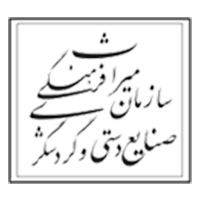The Buildings of Haft Tappeh
Dr. Negahban’s excavations led to identifying two mud-brick platforms after the tombs were found. Excavations at Platform no. 1, also known as Building no. 1, culminated in finding various rooms and halls round the platform. In the eastern part of the platform, a workshop, a salon and a courtyard with a kiln were excavated. Moreover, lots of clay tablets were unearthed in one of the excavated rooms in the northern part of the platform. The excavations ended up with the discovery of a clay figurine’s head, probably piece of a clay mask, plenty of metal objects, pottery, human and animal statuettes, and seal impressions. The architectural remains, archaeological finds and tablet texts suggest that Haft Tappeh had been a large city in the middle of the second millennium B.C.E. or, in other words, 15th and 14th centuries B.C.E. These excavations, in fact, brought about a more accurate insight into the ancient site of Haft Tappeh as well as the reigns of King Tepti-ahar and Inshushinak-shar-ilani.

Figure 1: The mud-brick platform on Building no. 1
Recent archaeological studies represented architectural spaces of the city in a different way. Accordingly, we know that enormous constructions at Haft Tappeh, some of which measure more than 100 m in area, have such thick walls that well imply the original height of these buildings. Based on previous studies and excavations, regardless of the tomb building, five complexes of massive construction with vast courtyards have been detected.
Huge mud-brick platforms had probably been surmounted by temples. The excavated peripheral rooms and salons had presumably been related to temples and would function as storerooms, workshops, kitchens and the like for different purposes such as administration and financials.

Figure 2: The mud-brick platform on Building no. 2
There is another part in city constructions that, considering its spatial division, could be regarded as a palace similar to Tchogha Zanbil palaces in that it also has a central square-shaped courtyard with a set of rooms around.
In the southern part of the city, remnants of an administrative building were dug and clay tablets were found. According to the tablets and the spatial division here, the place could be taken for an administrative center for listing, archiving, and storing particular objects.
No enclosure wall has been identified at Haft Tappeh so far.



